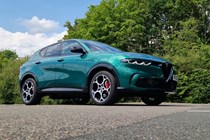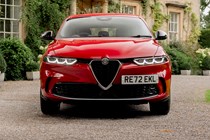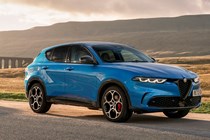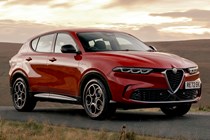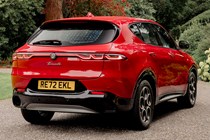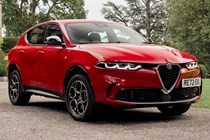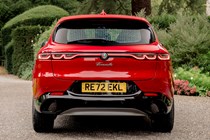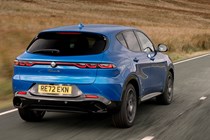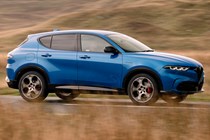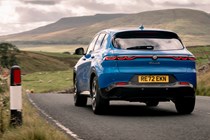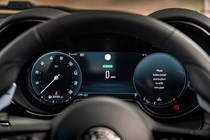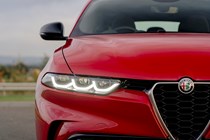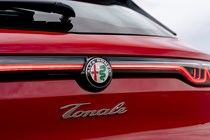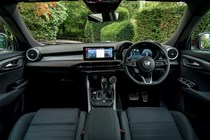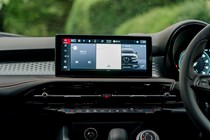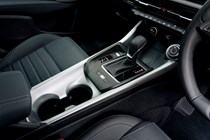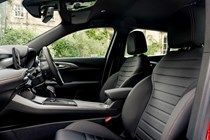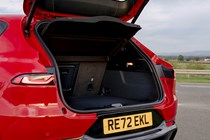
Alfa Romeo Tonale engines, drive and performance
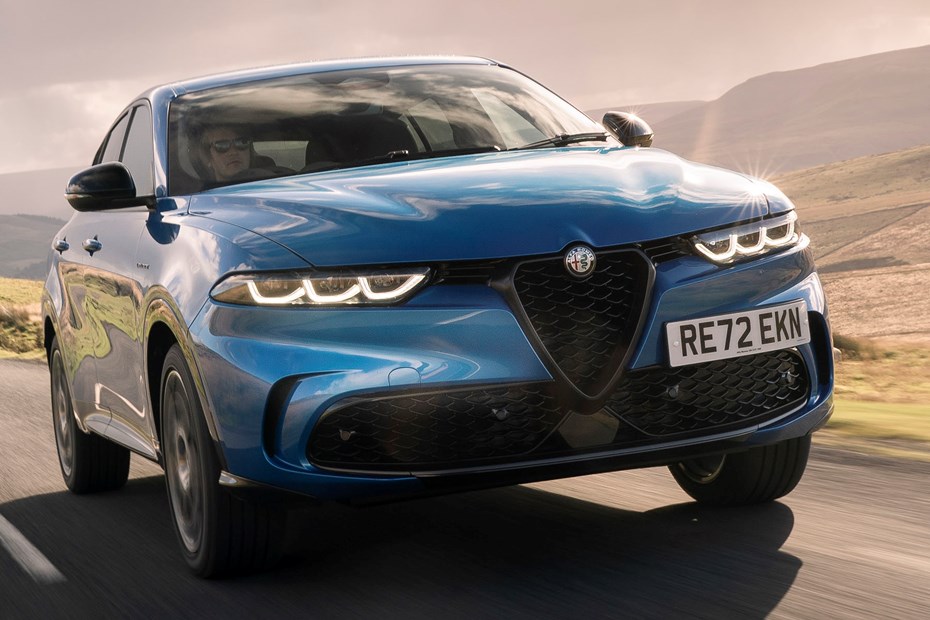
- Two petrol engines: one mild-hybrid, one PHEV
- Mild hybrid is clever, but lacks performance
- Plug-in hybrid is quicker, but not exciting
Hybrid petrol engines
There are two Tonales to choose from, both hybrid-assisted. The entry-level 160hp model relies on a 48v mild-hybrid system and is front-wheel drive only. The top model is a four-wheel drive plug-in hybrid electric vehicle (PHEV) with 280hp to play with.
The front-wheel drive mild hybrid model is powered by a turbocharged 1.5-litre four-cylinder petrol engine paired with a seven-speed dual-clutch automatic gearbox with a 20hp electric motor crammed into the transmission housing. Performance is adequate rather than sparkling, but it does feel quicker than the official 8.8-second 0-62mph figure suggests much of the time, thanks to the assistance from the electric motor.
What’s unusually clever about this particular mild-hybrid system, however, is that it can drive the car using electric power alone. This is something that other mild-hybrids can’t do. This feature is limited to very low speeds only, but it’s a nice touch when negotiating city traffic.
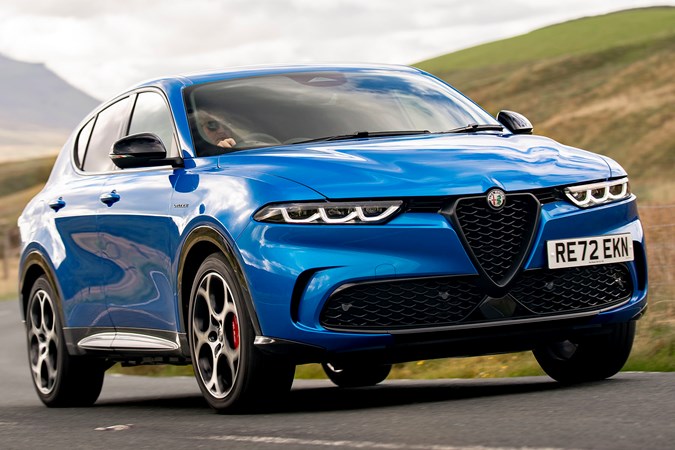
Unfortunately, there are some pronounced pauses in the power delivery and the odd obstructive gearchange in other circumstances. Resulting in the slightly unnerving feeling that there are two separate powertrains under the bonnet and that they’re engaged in some kind of long-running dispute.
The four-wheel drive plug-in hybrid feels more polished, although it can still experience some unexpected clunks and pauses. It combines a smaller 1.3-litre four-cylinder turbocharged petrol engine with a 120hp electric motor, the latter driven by a 15.5kWh battery pack and built into the six-speed automatic transmission.
The extra grunt drops the Tonale PHEV’s 0–62mph time down to 6.2 seconds and dramatically improves its acceleration at motorway speeds. It can still feel flaccid in eco mode, especially when the battery pack is flat, but stick it in the most sporting Dynamic drive mode and the extra power wakes up.
It is a shame that when you choose to use all this performance, the acceleration is accompanied by a rather strained and unpleasant engine sound.
What’s it like to drive?
- Light steering, agile handling
- Ample grip in corners
- A good motorway performer
How it handles comes down to which powertrain you choose – but there are some similarities between the two options. The steering takes some getting used to. It’s incredibly direct, but far too light which can make the car feel too loose and imprecise. Even though the system dials back the assistance as you build speed, it doesn’t go far enough and leaves you hankering for some extra feedback.
However, the Tonale’s suspension tuning does impress. It’s very agile for an SUV, offering plenty of grip and excellent body control – and the experience is only improved by the plug-in hybrid model’s four-wheel drive system. It has a huge amount of grip, which will give enthusiastic drivers plenty of confidence.
The PHEV also has a torque-vectoring system that can further fine tune the car’s performance to suit the road conditions and the way it’s being driven. Driven hard, it can change direction like a hot hatchback on demanding B-roads., with the extra torque from the electric motor enhancing acceleration out of the slowest bends. It feels well engineered to handle even more power, so we wouldn’t be surprised to see a faster version in the future.
Happily, the Tonale’s agility in the bends doesn’t mean comfort is forgotten. Ride quality on models fitted with the two-stage adaptive shock absorbers can be adjusted to suit, with the Soft mode making an obvious difference on rippled tarmac; but even the basic dampers are Koni items that come with technology that helps them deal with sudden bumps better than a conventional car.


